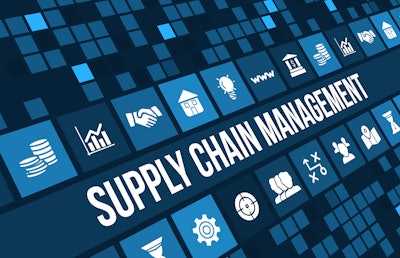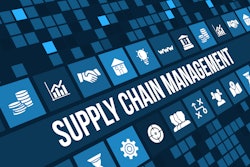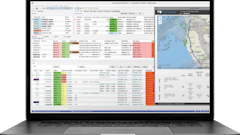
Global supply chains are under immense pressure, driven by mounting geopolitical conflicts, tariffs and evolving customer expectations. As a result, many organizations are leaning on technology – including AI – more than ever to remain competitive and meet clients' needs.
In 2024, more than 65% of logistics companies reported plans to implement AI in at least part of their operations. However, they only scratch the surface of what is possible. Through thoughtful deployment, the logistics industry can transform supply chains to be more adaptive, driving greater growth and long-term value.
Training AI to solve the right problems
AI is best applied to clearly defined challenges, and the logistics industry is no different. AI can support critical functions like weather forecasting, inventory optimization and route planning. Yet, according to a recent Gartner report, only 23% of supply chain organizations have a formalized AI strategy in place. This risks key initiatives failing to deliver measurable ROI.
To change this and create a formal strategy, logistics leaders must first identify how they plan to use AI and where possible inefficiencies exist—whether they are related to time, money or customer trust. Pinpointing pain points enables organizations to make better decisions quickly and align them to their business priorities, allowing organizations to create solutions that are both scalable and sustainable.
Integrating AI successfully
One of the most common pitfalls in AI deployment is treating it as an “add-on” solution. Instead, AI must be embedded into optimized workflows.
Organizations must integrate AI with existing platforms, such as ERP, TMS and WMS, to ensure that data flows seamlessly across systems. This requires organizations to have a deliberate data strategy that prioritizes quality, accessibility and governance. Clean, contextual data is essential for AI to operate at its full potential.
Outdated or siloed data can lead to inaccurate predictions, and the consequences can ripple across the supply chain, resulting in inventory inaccuracies, demand forecasting errors, supplier and vendor discrepancies or mismanaged routing. On the other hand, when AI is integrated into a robust data ecosystem, it enables timely, relevant and actionable insights that address these challenges head-on.
AI’s rapidly maturing nature can transform the supply chain, but human oversight is required
While AI has many benefits, true value comes from machine learning and its ability to learn and adapt continuously. With self-learning AI-enabled supply chains, logistics organizations can create real-time feedback loops to understand and prevent possible missteps and recalibrate operations to improve performance. This means that organizations can better reroute shipments during a disruption – such as a weather emergency – or adjust inventory levels based on demand signals.
However, AI cannot operate without human oversight. Balancing AI with the human touch helps guide learning and ensures its ethical use while preventing unintended bias. When used right, AI augments human decision-making and strengthens human ingenuity and creativity to drive forward supply chain resiliency, responsiveness and increased intelligence over time.
For example, AI’s systems can quickly identify patterns, anticipate delays within specific regions, and suggest alternative routes for greater efficiency. Counterchecking the solution with a human operator validates the recommendation and factors in additional elements like customer preference or local conditions. The collaboration ensures AI acts as a tool for empowerment to deliver optimized results.
Reshaping responsibilities and upskilling your workforce
AI’s ability to automate routine tasks creates more opportunities for employees—but only if organizations take the necessary steps to train them. Often framed as a threat to jobs, AI’s ability to streamline routine tasks empowers workers to shift their focus to more rewarding tasks, such as building supplier relationships and creating new customer offerings.
As logistics leaders look to adopt AI more over the coming years, their strategy must focus on their people. This will ensure that employees understand how and when to use AI and keeps employees engaged and productive in the long term. Implementing dedicated training programs, change management initiatives and sharing transparent communication will help workers understand AI’s role in their jobs and ensure they ultimately embrace these changes and contribute to its growing success.
Thoughtful AI is the future of logistics
There is no question that AI has the power to transform logistics. But this will only occur if deployed with purpose, integrated into transparent processes and guided by human expertise. Supply chain leaders must act now to build a comprehensive strategy, using technology to solve today’s challenges while preparing for future demand.
The future of logistics does not just include automated systems; it’s adaptive, intentional and human-centered by nature. Supply chain leaders must see past short-term applications and truly ask where the long-term investment and ROI lie as they develop their AI strategy. By asking the right questions, organizations can deploy AI with intention, which will lead to greater growth over the coming years.


















